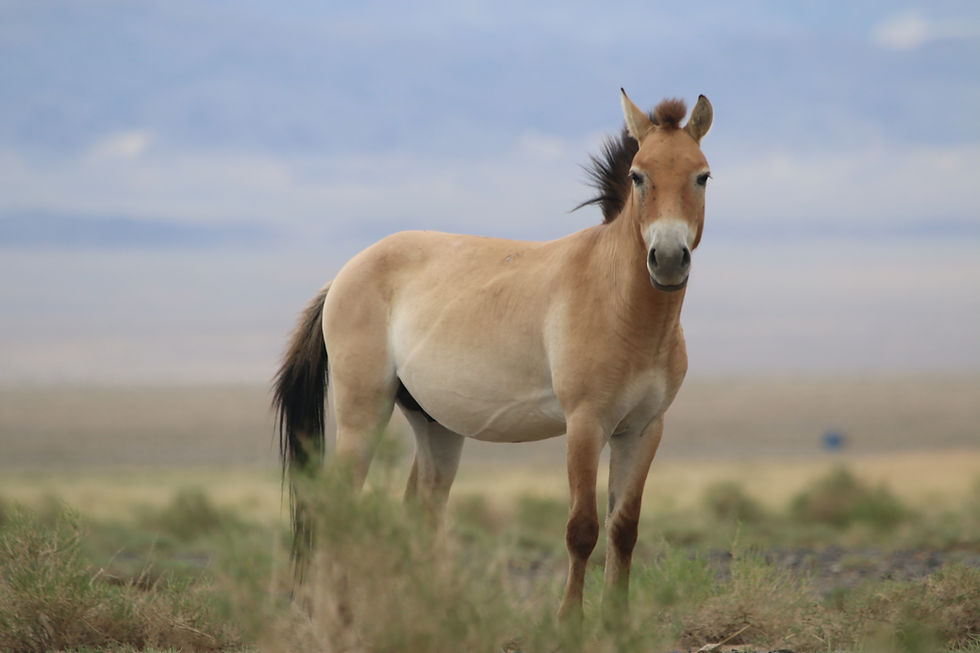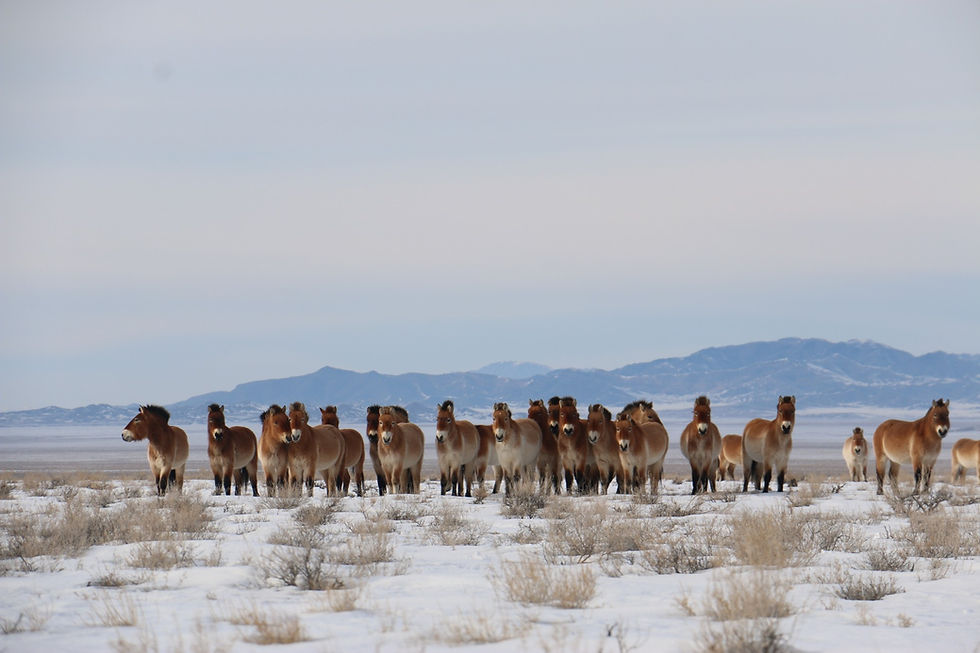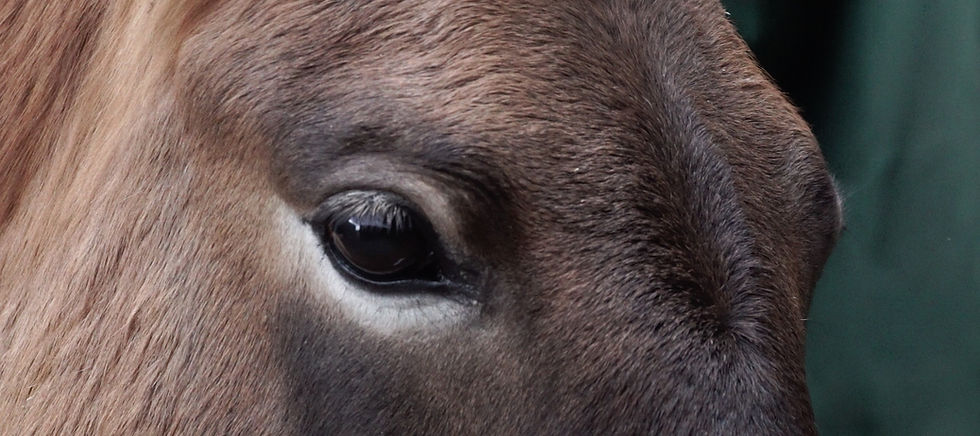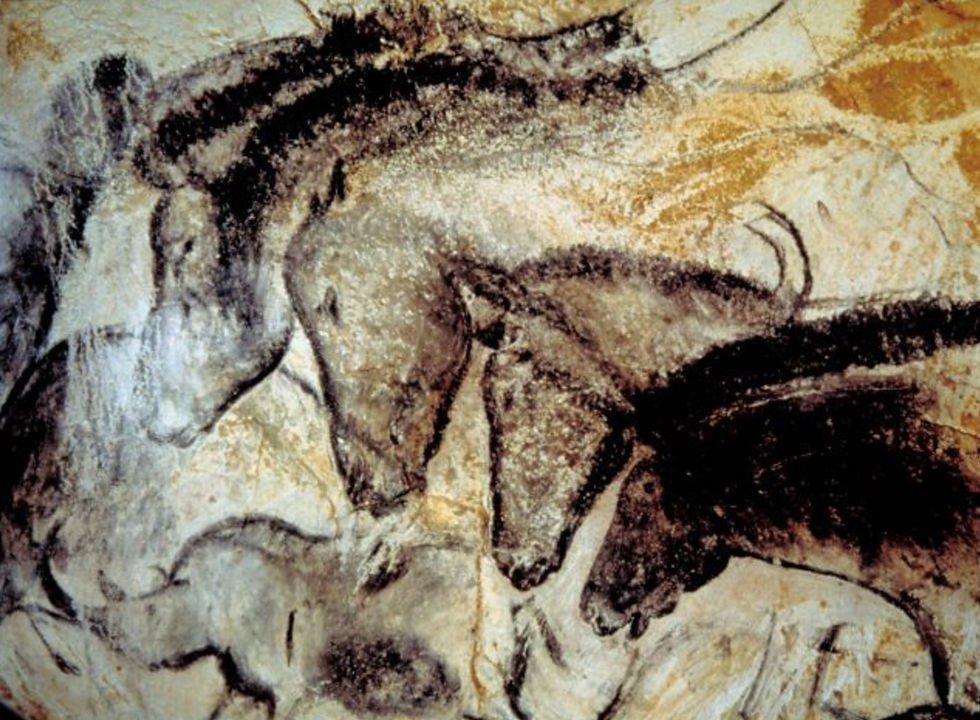Takhi - The World's Last Wild Horse
- Bonny Mealand

- Nov 18, 2022
- 4 min read
Updated: Jul 5, 2023

Article 2/6:
On a remote, Hebridean Island I met a young unhandled colt who changed my life. I was there to trim the hooves of a herd of semi-feral ponies, I thought I knew what I was doing, I might have even been a bit smug about my capabilities. Luckily for me, I was about to have my world turned upside down – The Edge of the Atlantic

This experience made me question everything I had learnt about horse behaviour. Why was so much of the equine training and behaviour literature inaccurate or misleading? Why were the techniques and skills I had previously learnt and used successfully not effective with these ponies? I decided to go back to the beginning and look for studies and teaching that more closely aligned with what I was experiencing with these fascinating, unhandled ponies.

Along with my research, I decided to spend as much time as I could observing the behaviour of equines who had very little or no human interference in their lives so I could witness horse behaviour in its most natural expression. I was generously granted permission by the Highland Wildlife Park in the Scottish Highlands to spend time watching their herd of Takhi (Equus ferus ssp.Przewalskii / Przewalski’s horse).
The Takhi are the distinctive ochre hued spikey maned wild horses of the Steppe. 30,000 years ago our ancestors were painting depictions of horses who looked like Takhi on cave walls.

When the European Nikolai Przewalski “discovered” them in 1878 he decided to name them after himself, clearly reflecting the arrogant attitudes of the times in which he lived. However, their Mongolia name Takhi means spirit, or spirit horse as they hold a holy importance for the Mongolian people. Animals which are feared or revered often survive when other species around them are killed off. This is true of the Takhi as their spiritual significance is one of the reasons they endured.
The Takhi are one of the great success stories of the conservation world. They showcase the vital role zoos serve in the protection and successful re-introduction species that would otherwise be extinct. On a sad day in 1969 the last solitary Takhi stallion was seen on the Steppe. Not long after they were declared extinct in the wild and only a few survived in scattered living collections across the globe. The travels of newlyweds Jan and Inge Bouman provided a pivotal point in the story of the Takhi, realising that the world was about to loose them they devoted their lives to bringing them back from the brink. This inspirational couple convinced experts and enthusiastic supporters of the breed to collaborate. They chose the 13 Takhi that represented the most genetic diversity available and implemented a successful breeding program. This ground breaking work culminated in the reintroduction of the Takhi onto the Mongolian Steppe on 5th June 1992. They are now over 2000 living across the world, thriving and living the wild lives they were meant for.

Along with the wild horses, the park is home to many of the worlds tundra species. Polar Bears, Snow Leopards, European Wolves, Bison and Elk are just some of the very precious animals who live here. With its large and enriched enclosures and the knowledgable and compassionate care provided by the inspirational staff, it is a safe place for some of the worlds most threatened species. Their own natural homes have been decimated by habitat loss and/or persecution. Set amid the majestic beauty of the Cairngorm mountains this is a very special example of what a haven a zoo can be.
The Takhi were thought to be the last truly wild horses left in the world as all other wild living horses are feral (descended from escaped domestic stock). Recent genetic research has raised questions about this but there is no doubt that they are significantly different to their domestic cousins. Genetics show that 45,000 years ago a primitive species of equine diverged into two separate sub-species. The first being the line who would lead to the domesticated horses we know today, and the second being the Takhi.

Another example is that they have 66 chromosomes and domestic horses only 64. For those of us who are lucky enough to get close to them, we have experienced just how different they are. Their smell is uniquely their own, a sharp pungent fragrance that hits the back of your throat. Astute and strong-willed they are quick thinking and good at making their own decisions. They have survived through self-selecting for the traits that keep you alive in a hostile and challenging environment. Unlike our domestic and feral horses who show the influence of 6000+ years of selective breeding based on decisions made from a human perspective, things like size, colour or whatever is fashionable at that time, but overwhelmingly we have bred horses for a trainable temperament. Even the most challenging domestic horse isn’t a patch on a Takhi who’s made up their mind! I believe this is why the Takhi have been labelled as untrainable for so long.

In 1902 handlers with the New York Zoological Society endeavoured to “break in” a pair of Takhi, they gave up. “The longer the men worked with them, the wilder and more obstinate the animals became.” I think this tells us more about how the men were attempting to train them than it does about the Takhi themselves. In my experience these horses are a joy to work with. I find the experience is more like a conversation between equals rather than the command and response focus of much animal training. Its true if they don’t want to do something they won’t, so we may as well make other plans for that day. It’s refreshing though, to allow the work to be horse led instead of humans calling all the shots. If all of us domestic horse owners had the opportunity to spend time with some Takhi how much more grateful we would be for the compliant natures of our domesticated companions.

If you would like to find out more about the Takhi this in-depth article is the best that I have come across – Przewalski’sWild Horse

This charity is doing some amazing work for the Takhi - International Takhi Group
This is part of a blog series:













Comments